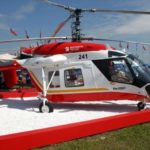Following the launch of the UK’s industrial Strategy whitepaper, Business Secretary Greg Clark has announced £53.7 million of funding for seven R&D projects to grow innovation in the aerospace sector.
The funding is part of the government’s work with industry through the Aerospace Growth Partnership (AGP) to tackle barriers to growth, boost exports and grow high value jobs.
Business Secretary Greg Clark said: “Earlier this week, we launched our ambitious Industrial Strategy which builds on our significant economic strengths, while looking at innovative ways to improve our productivity and will ensure government continues to work closely with industry, including our UK aerospace sector.“
He added: “The UK aerospace sector is one of the most successful in the world, with strengths in some of the most technologically advanced parts of aircraft. To support this, we are today announcing £53.7 million of investment in seven aerospace research and development (R&D) projects across the UK. This investment is part of the £3.9 billion government and industry committed to the sector by 2026.”
The projects will be:
- The U-CAIR project, led by Honeywell in partnership with the National Physical Laboratory and Small and Medium Enterprises Gas Sensing Solutions and SST Sensing, is developing cabin air sensor technology to improve passengers’ cabin experience. The U-CAIR (UK ATI Cabin Air) project will not only create an improved passenger experience in large passenger aircraft, business jets and regional aircraft, but also allow for further fuel savings of up to 2000 litres on long haul flights. Receiving a grant of £2.3 million, this project will enable the UK to develop key technologies that will lead the market in passenger-friendly aircraft.
- The Open Flight Deck project, led by GE Aviation, will seek to overcome the barriers to adopting new technologies on the flight deck; traditionally difficult to do because of the high cost of change and certification. Open Flight Deck will be an open platform that allows the OEM to work with a range of suppliers to develop ‘apps’ – easier to build, quicker to deploy, and with the potential for upgrade as new capabilities become possible. The consortium behind the project, which has received a grant of £13.1 million, also includes BAE Systems, Rolls-Royce, Coventry University and the University of Southampton.
- The DRAMA (Digital Reconfigurable Additive Manufacturing facilities for Aerospace) project is led by the Manufacturing Technology Centre (MTC) with partners ATS Global, Autodesk, Granta Design, Midlands Aerospace Alliance, National Physics Laboratory, Renishaw and the University of Birmingham. DRAMA will establish leading additive manufacturing ‘test bed’ facilities for the aerospace industry and its supply chain at the National Centre for Additive Manufacturing (based at the MTC in Coventry) and the Renishaw AM Solution Centre in Stone. The project will showcase the use of digital technologies to drive productivity and reliability in AM, leading to increased adoption of AM technologies by the aerospace sector and, in the long term, other industrial sectors. It will also deliver the world’s first digitally-twinned reconfigurable AM facility and establish the UK as a global leader in additive manufacturing technology. The project, part of the ATI programme, has received a grant of £11.2 million through the Industrial Strategy Challenge Fund.
- Building on the success of the Trent family of three shaft engines, Rolls-Royce has announced its intent to develop UltraFan, a novel Ultra High Bypass Ratio (UHBR) geared architecture. This provides a significant improvement in propulsive efficiency and will be available for the next generation of aircraft. The DELICE (Design of Engineered Lightweight Innovative Casings for Engine) project provides a fundamental enabler for this new architecture in the design, development and manufacture of the world’s largest composite fan case, offering a low-speed and pressure ratio fan system. Rolls-Royce will work in partnership with the National Composites Centre and the University of Oxford and use the UK manufacturing services supply chain to achieve this overall aim. The project has received a grant of £6 million.
- The Power-Plant Integration with Platform Systems (PIPS) program will develop technologies in the UK to enable greater integration between the power-plant and airframe, resulting in a more capable and efficient aircraft. This programme shall specifically address structural, thermal/fluid and control system integration and the associated aircraft evaluation tools to quantify the benefits realised through greater integration. This will result in a lighter, more fuel efficient and environmentally friendly engine and aircraft of the future. Rolls-Royce’s key partners to successfully deliver this project are the University of Oxford, Cranfield University and Queens University, Belfast. The project has received a grant of £4.5 million.
- The SMPP (Scalable Multi-Platform Power) project will establish More-Electric Aircraft electrical systems requirements for a range of aircraft types, and will develop systems and sub-systems that will work together to address power generation, power distribution/conversion, and flight critical power consumption. The consortium – led by Safran Electrical & Power UK in partnership with Rolls-Royce, GE Aviation, Raytheon and UTC Aerospace Systems – will encourage airframers to contribute to and evaluate the work performed by the consortium. The project has received a grant of £13 million.
- The Zephyr Innovation Programme (ZIP) was created as a strategic R&D project to develop new cutting-edge component technologies to support Airbus’s Zephyr High Altitude Pseudo Satellite (HAPS). ZIP is led by Airbus in partnership with Axillium Research, Formtech Composites, Productiv, OXIS Energy, Newcastle University and Cranfield University. The grant of £3.6 million will support the development of key technologies in aerostructures, battery technology and energy storage, and propulsion that will enable flight performance improvements, expanding the operational capabilities of the next generation of Airbus Zephyr.

